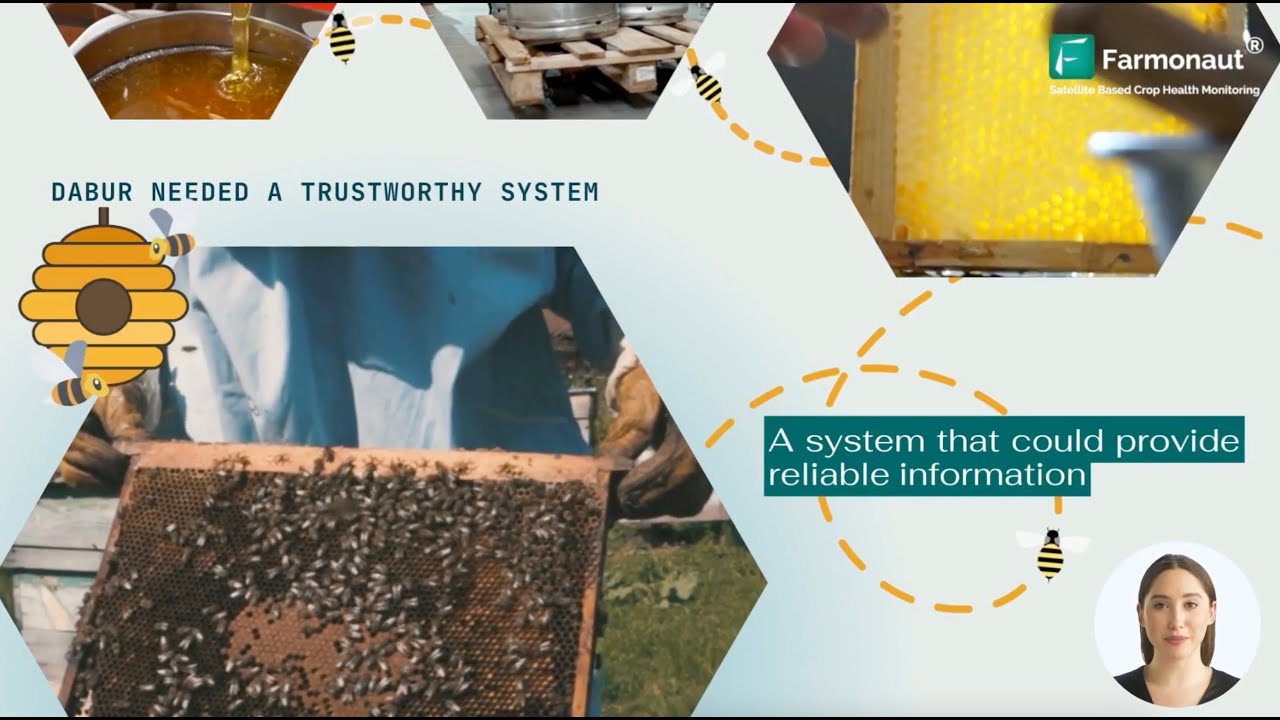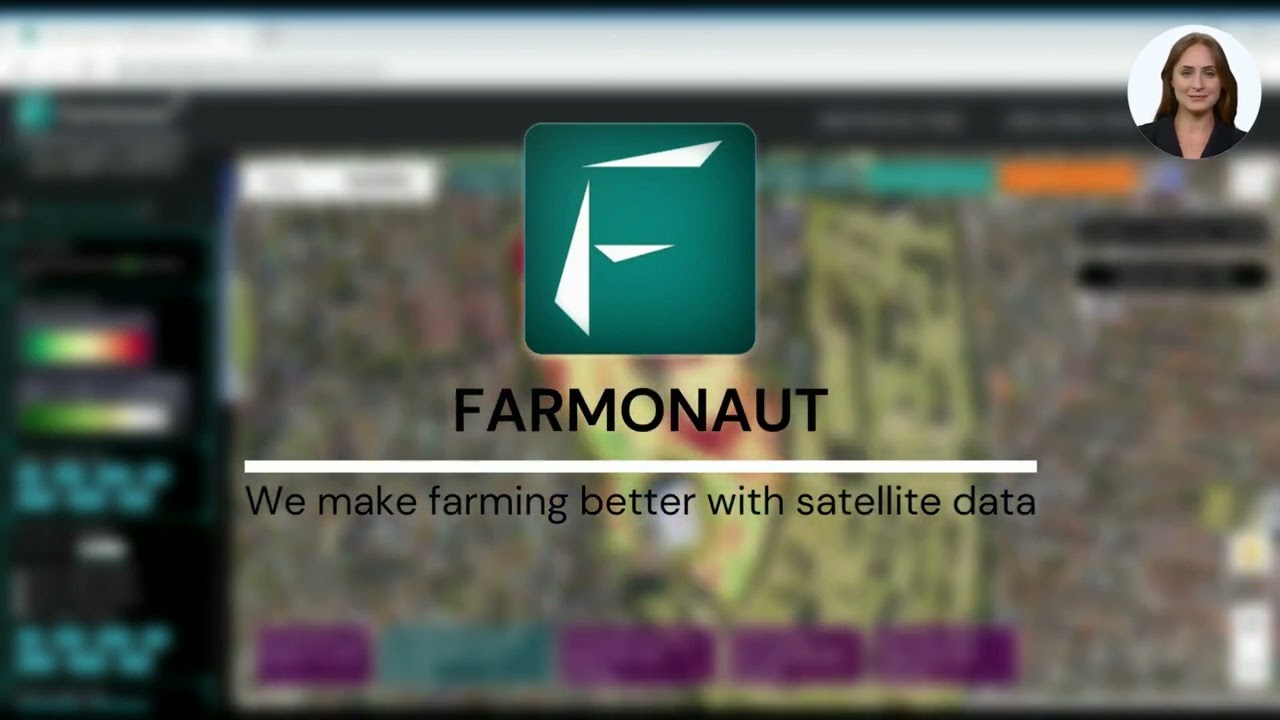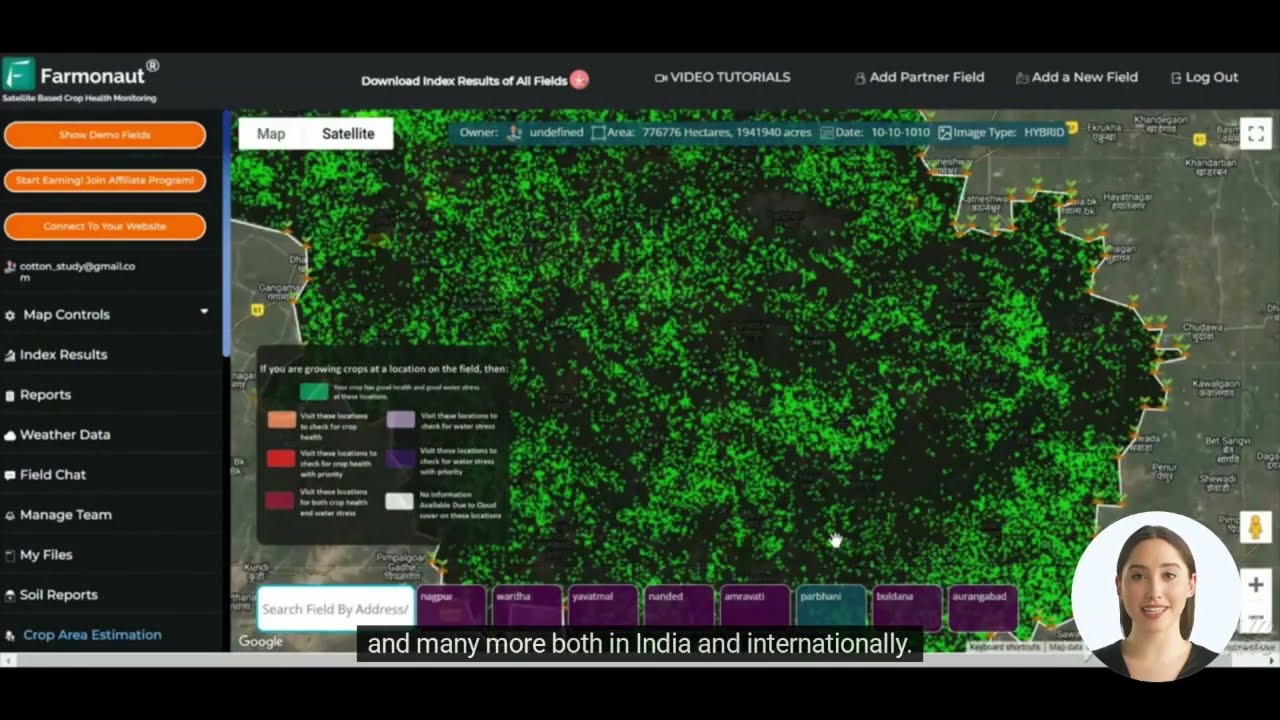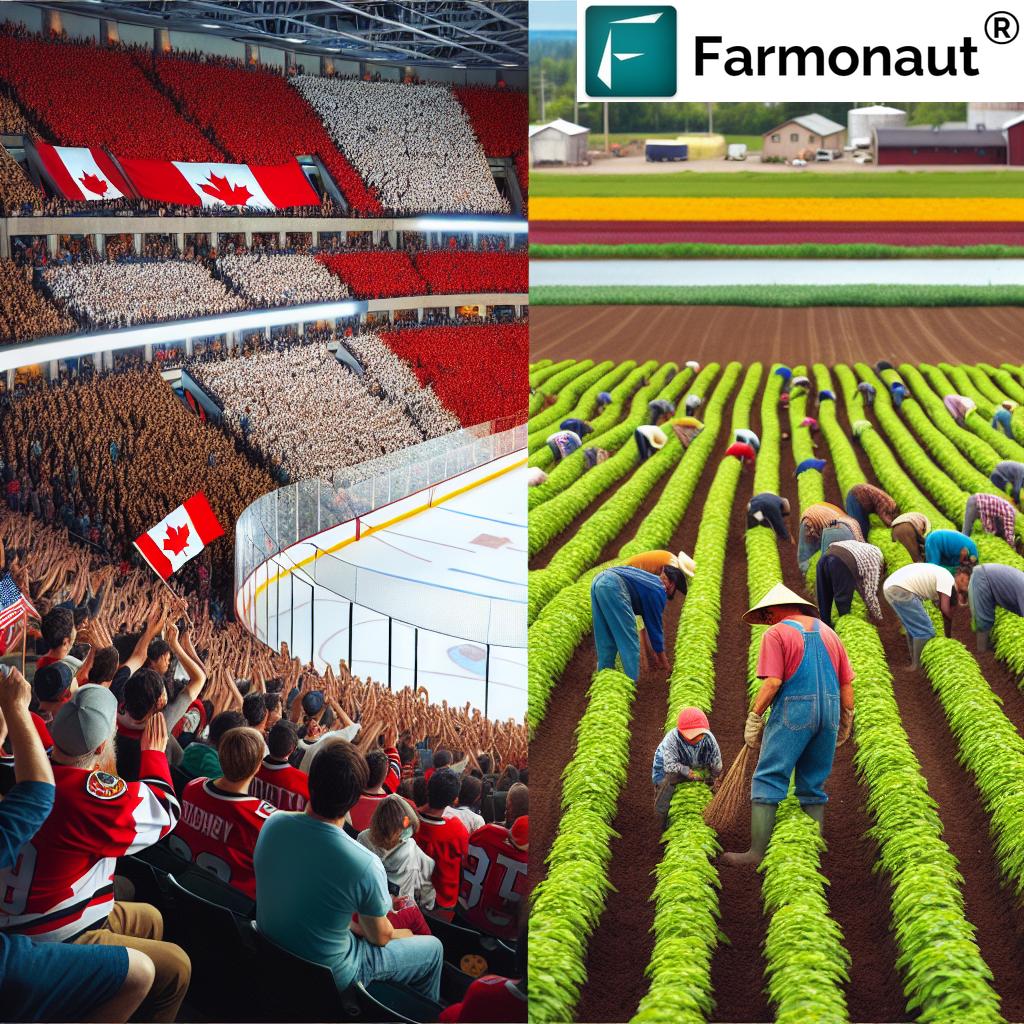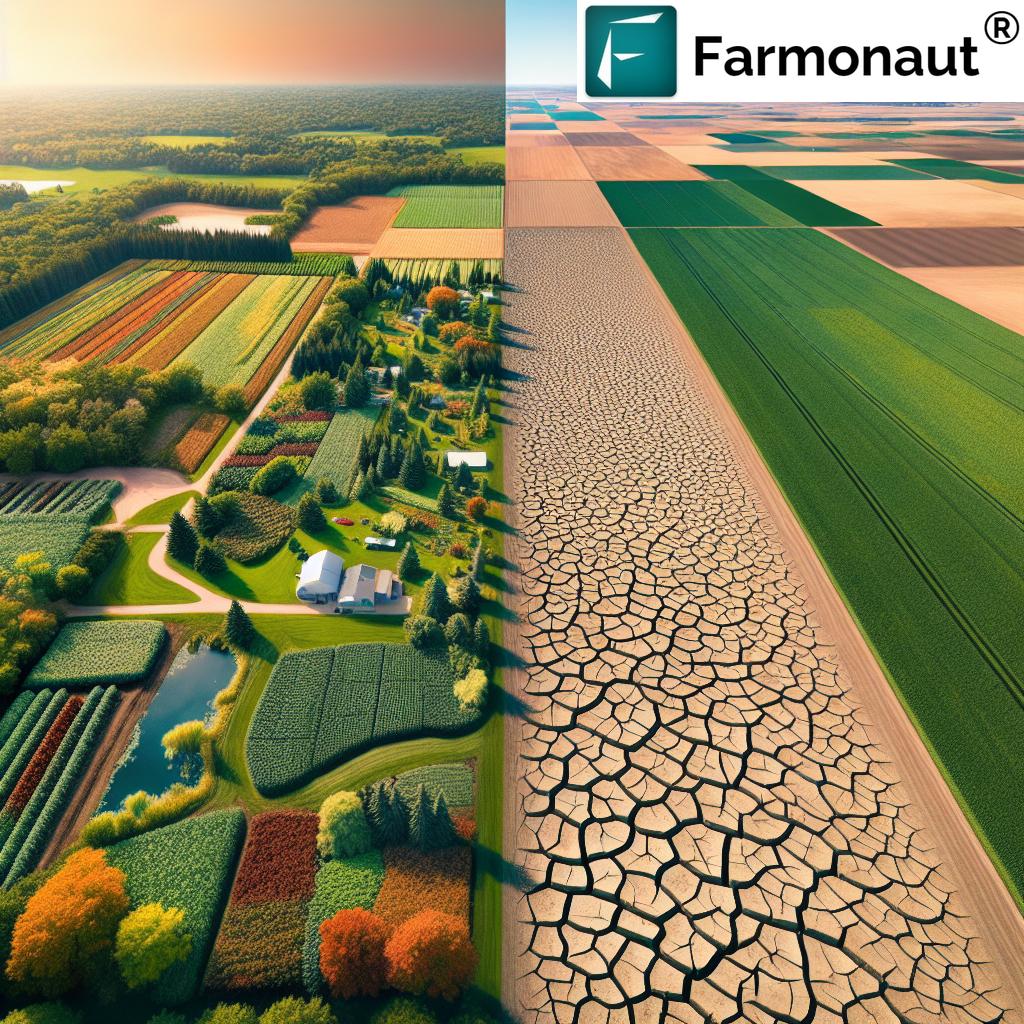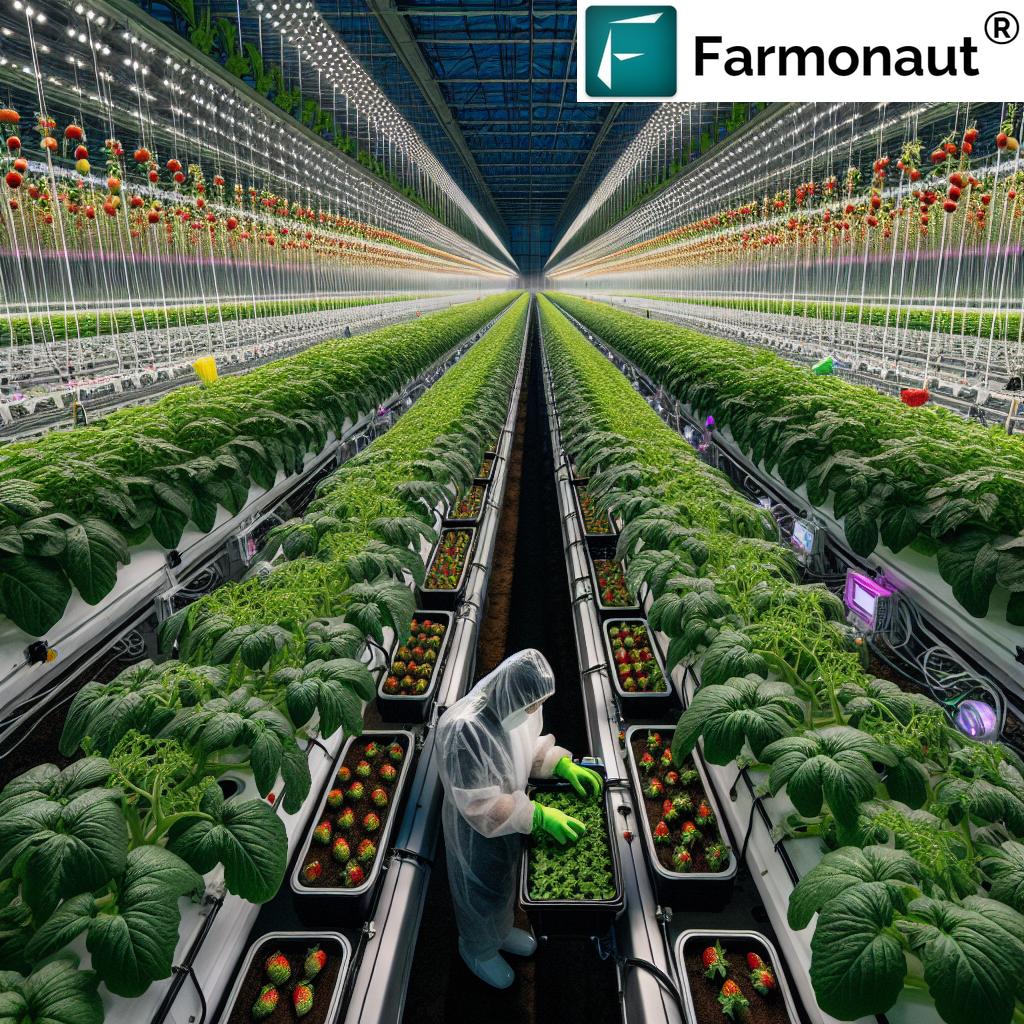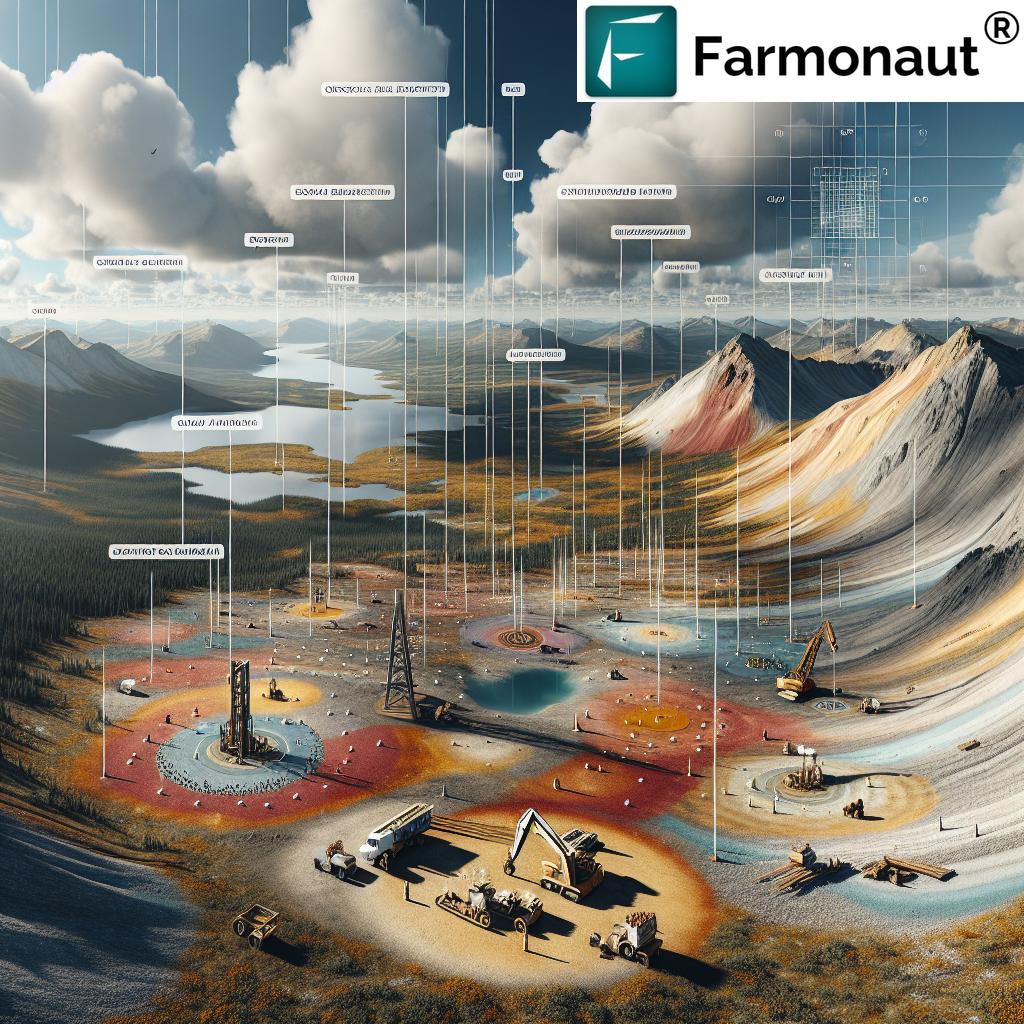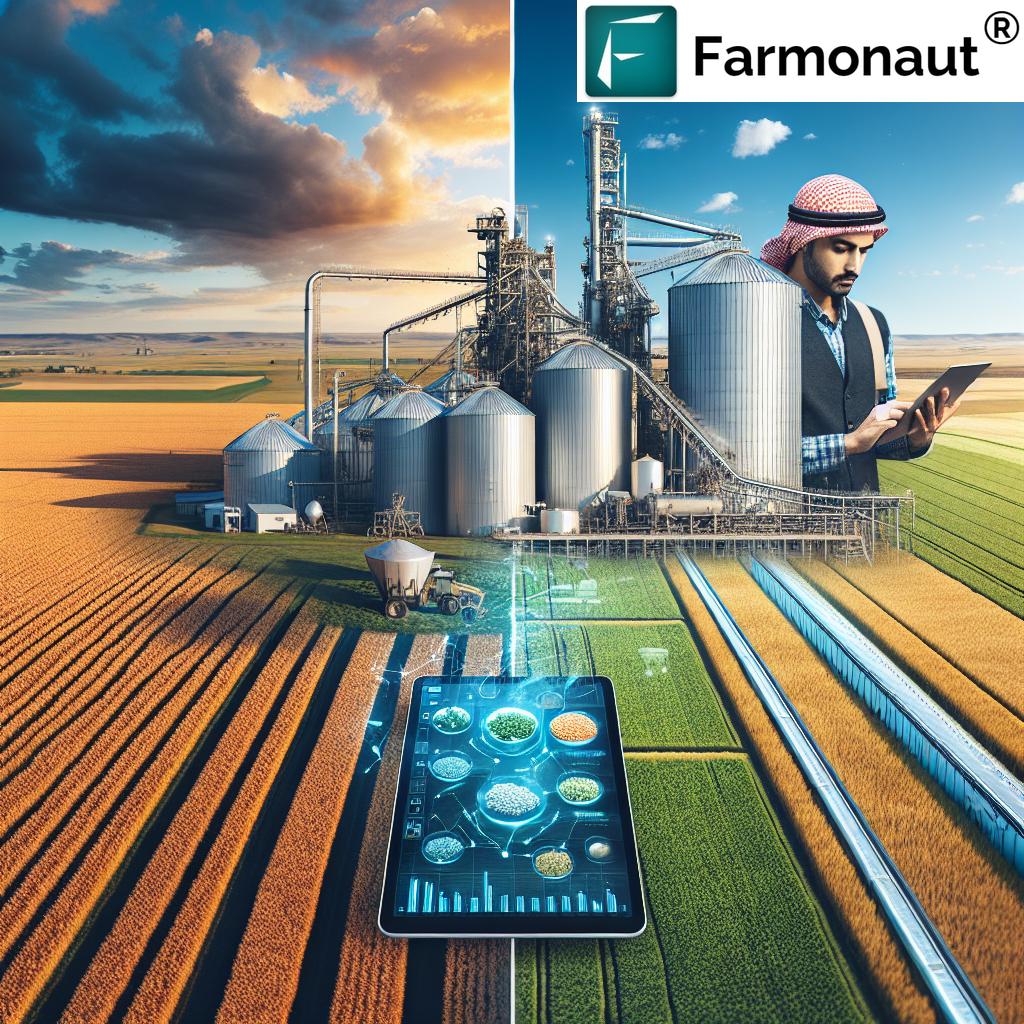Revolutionizing Sustainable Agriculture: How Bee Vectoring Technology is Transforming Crop Protection in Canada
“Bee vectoring technology can reduce chemical pesticide use by up to 98% in certain crops.”
In the ever-evolving world of agriculture, we’re witnessing a remarkable convergence of nature and technology that’s reshaping the future of crop protection. At the forefront of this revolution is Bee Vectoring Technology (BVT), an innovative approach that’s transforming how we manage pests and diseases in crops. This groundbreaking method, which harnesses the natural behavior of bees to deliver biological crop protection agents, is not just a scientific marvel – it’s a game-changer for sustainable agriculture technology.
As we delve into the fascinating world of bee vectoring for crop protection, we’ll explore how this precision agriculture technique is making waves in Canada and beyond. From blueberry fields in British Columbia to sunflower farms in Ontario, BVT is proving to be a powerful ally in the quest for more sustainable, efficient, and eco-friendly farming practices.
Understanding Bee Vectoring Technology
Bee Vectoring Technology represents a paradigm shift in how we approach crop protection. At its core, this innovative pest management solution leverages the natural foraging behavior of bees to deliver biological control agents directly to crops. But how exactly does it work?
- The Process: As bees exit their hives, they pass through a specially designed dispenser containing a powder formulated with beneficial microbes.
- Natural Delivery: The powder adheres to the bees’ bodies and is carried to the flowers as they pollinate.
- Targeted Application: This method ensures that the active ingredients are delivered precisely where and when they’re needed most – during the critical flowering period.
This eco-friendly crop disease control method is not just effective; it’s also incredibly efficient. By utilizing bees as natural vectors, BVT achieves a level of precision that traditional spraying methods simply can’t match.
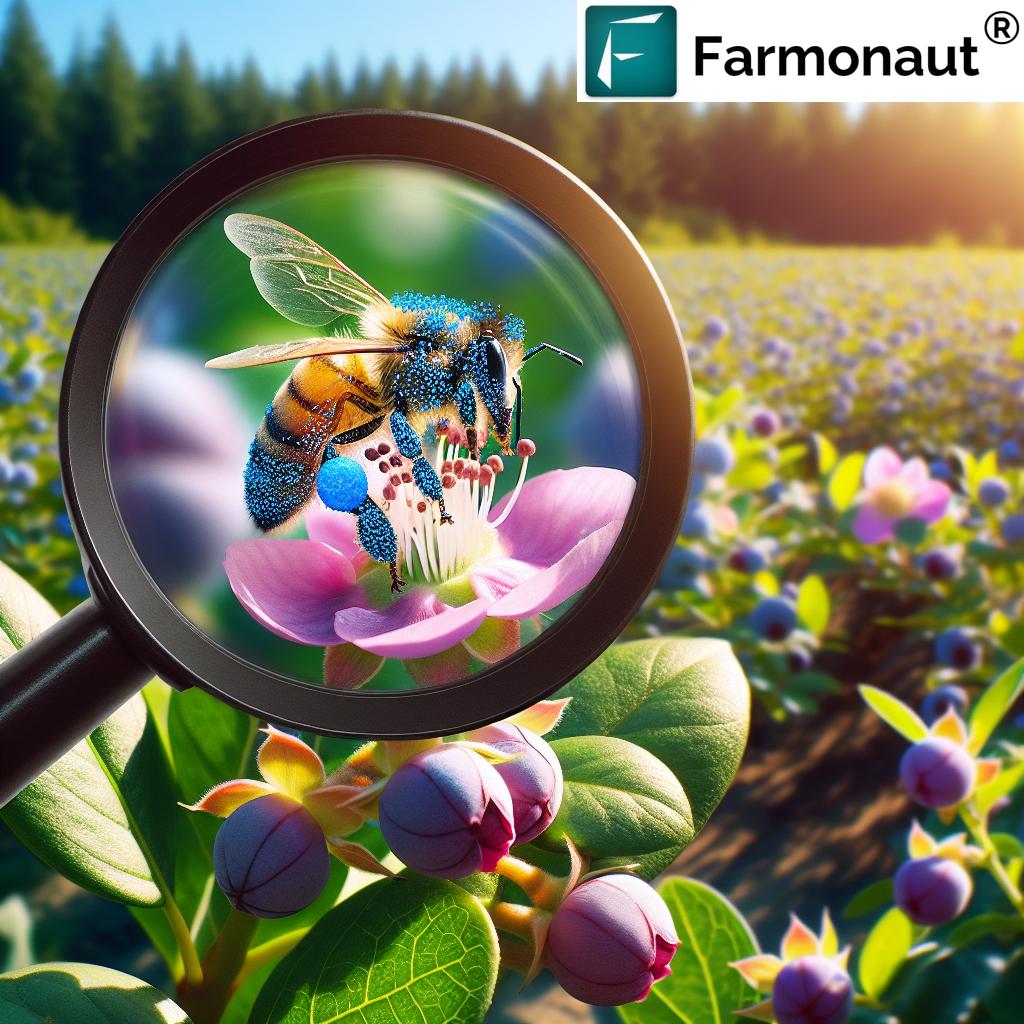
The Science Behind Bee Vectoring
At the heart of BVT lies a fascinating interplay between biology and agriculture. The technology relies on carefully selected strains of beneficial fungi or bacteria that act as biological control agents. These microorganisms work in various ways to protect crops:
- Competitive Exclusion: They outcompete harmful pathogens for space and nutrients on the plant surface.
- Induced Resistance: Some strains stimulate the plant’s natural defense mechanisms.
- Direct Antagonism: Certain microbes produce compounds that inhibit the growth of plant pathogens.
The beauty of this system lies in its sustainability. Unlike chemical pesticides, which can harm beneficial insects and accumulate in the environment, the biological agents used in BVT are naturally occurring and environmentally benign.
Applications in Canadian Agriculture
Canada, with its diverse agricultural landscape, has become a proving ground for Bee Vectoring Technology. From the berry fields of British Columbia to the expansive farms of Ontario, BVT is making significant inroads:
- Blueberries: In British Columbia, BVT has shown promising results in controlling Botrytis gray mold, a common fungal disease in blueberries.
- Strawberries: Ontario strawberry growers have reported improved fruit quality and yield when using BVT to manage fungal diseases.
- Sunflowers: In the Prairie provinces, BVT is being explored for its potential in enhancing pollination and controlling pests in sunflower crops.
These applications demonstrate the versatility of BVT across different crop types and growing conditions, highlighting its potential as a key player in Canada’s sustainable agriculture future.
Environmental Benefits of Bee Vectoring
One of the most compelling aspects of Bee Vectoring Technology is its positive environmental impact. As we strive for more sustainable farming practices, BVT offers several key advantages:
- Reduced Chemical Use: By drastically cutting down the need for chemical pesticides, BVT helps preserve soil health and biodiversity.
- Water Conservation: Unlike traditional spraying methods, BVT doesn’t require water for application, a significant benefit in water-stressed regions.
- Pollinator Health: By using bees as vectors, this technology indirectly supports pollinator populations, which are crucial for ecosystem health.
- Lower Carbon Footprint: With fewer tractor passes needed for spraying, BVT contributes to reduced fuel consumption and emissions.
These environmental benefits align perfectly with the growing global emphasis on sustainable agriculture and eco-friendly farming practices.
Economic Implications for Farmers
While the environmental benefits of BVT are clear, its economic advantages for farmers are equally compelling:
- Cost-Effective: By reducing the need for frequent pesticide applications, BVT can lead to significant cost savings for farmers.
- Yield Improvements: Many farmers using BVT report increased crop yields and better fruit quality, translating to higher market value.
- Labor Efficiency: The self-dispersing nature of BVT means less time and labor spent on traditional pesticide application methods.
- Market Differentiation: Products grown using BVT can be marketed as eco-friendly, potentially commanding premium prices in certain markets.
These economic benefits make BVT an attractive option for farmers looking to balance profitability with sustainability.
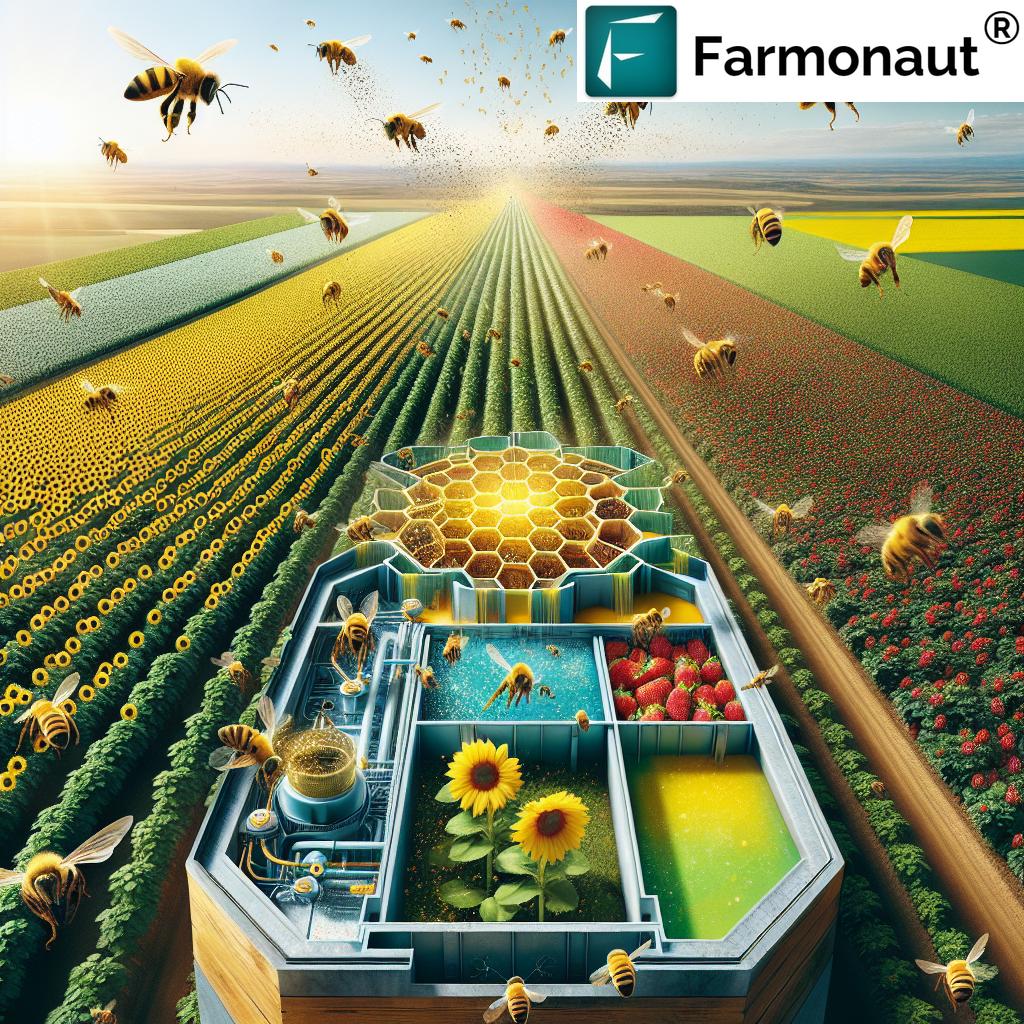
Challenges and Future Directions
While Bee Vectoring Technology shows great promise, it’s not without its challenges:
- Weather Dependence: BVT relies on bee activity, which can be affected by adverse weather conditions.
- Crop Specificity: The technology is most effective in crops that require or benefit from insect pollination.
- Regulatory Hurdles: As a relatively new technology, BVT faces ongoing regulatory assessments in different countries.
Despite these challenges, the future of BVT looks bright. Ongoing research is focused on:
- Expanding the range of crops and pathogens that can be targeted with BVT.
- Developing new formulations of biological control agents for improved efficacy.
- Integrating BVT with other precision agriculture techniques for comprehensive farm management.
“Bee vectoring has been successfully applied to over 65 commercially grown crops, including blueberries, strawberries, and sunflowers.”
The Role of Technology in Modern Agriculture
As we explore the potential of Bee Vectoring Technology, it’s important to consider its place in the broader landscape of agricultural innovation. Today’s farmers have access to a wide array of technological tools designed to enhance productivity, sustainability, and efficiency. One such tool that complements BVT and other precision agriculture techniques is Farmonaut’s satellite-based farm management solution.
Farmonaut offers advanced, satellite-based farm management solutions via android, iOS, web/browser App, and API. Its mission aligns perfectly with the goals of BVT – making precision agriculture affordable and accessible to farmers worldwide. By integrating innovative technology and data-driven insights into traditional farming practices, Farmonaut provides valuable services such as real-time crop health monitoring, AI-based advisory systems, and resource management tools.
Here’s how Farmonaut’s technology can complement Bee Vectoring Technology:
- Crop Health Monitoring: Farmonaut’s satellite imagery can help farmers identify areas of their fields that might benefit most from BVT application.
- Resource Optimization: By providing insights into soil moisture and vegetation health, Farmonaut can help farmers make informed decisions about when and where to deploy BVT for maximum effectiveness.
- Data-Driven Decision Making: The AI-powered insights from Farmonaut can be combined with BVT data to create comprehensive crop management strategies.
For farmers interested in exploring these complementary technologies, Farmonaut offers several ways to access their services:
For developers and businesses looking to integrate Farmonaut’s satellite and weather data into their own systems, the company also offers API access:
Comparing Bee Vectoring Technology to Traditional Methods
To fully appreciate the impact of Bee Vectoring Technology, it’s helpful to compare it directly with traditional pesticide application methods. The following table provides a clear comparison of key aspects:
| Method | Environmental Impact | Efficiency | Cost-Effectiveness | Crop Yield Improvement |
|---|---|---|---|---|
| Bee Vectoring Technology | Low | 90-95% | $50-100/acre | 10-20% |
| Traditional Pesticides | High | 60-70% | $150-300/acre | 5-10% |
This comparison clearly illustrates the advantages of BVT in terms of environmental impact, efficiency, cost-effectiveness, and potential for crop yield improvement.
The Global Impact of Bee Vectoring Technology
While our focus has been on the application of BVT in Canada, it’s important to note that this technology has global implications. As the world grapples with challenges like climate change, population growth, and the need for sustainable food production, innovations like BVT offer hope for a more resilient and eco-friendly agricultural future.
- Food Security: By improving crop yields and reducing losses due to pests and diseases, BVT contributes to global food security efforts.
- Climate Change Mitigation: The reduced need for chemical pesticides and fewer tractor passes means lower greenhouse gas emissions associated with crop protection.
- Biodiversity Conservation: By supporting pollinator health and reducing the use of broad-spectrum pesticides, BVT helps preserve biodiversity in agricultural landscapes.
Countries around the world, from the United States to Europe and beyond, are taking notice of BVT’s potential. For instance, in Germany, researchers are exploring the use of BVT in strawberry production, while in the United States, trials are ongoing in various crops, including almonds and cranberries.
The Role of Investors in Advancing Agricultural Innovation
The development and widespread adoption of technologies like BVT require significant investment. For investors interested in the agricultural technology sector, BVT represents an exciting opportunity:
- Growth Potential: As sustainable agriculture gains prominence, technologies like BVT are well-positioned for growth.
- Diversification: Agricultural technology offers a unique avenue for portfolio diversification within the broader tech sector.
- Impact Investing: BVT aligns well with ESG (Environmental, Social, and Governance) investment criteria, appealing to socially conscious investors.
Investors play a crucial role in bringing innovations like BVT from the laboratory to the field, ultimately benefiting farmers, consumers, and the environment.
The Future of Pollinator-Based Crop Management
As we look to the future, the potential applications of pollinator-based crop management extend far beyond what we see today. Researchers are exploring new frontiers in this field, including:
- Expanded Crop Range: Adapting BVT for use in a wider variety of crops, including those not traditionally associated with bee pollination.
- Enhanced Formulations: Developing new biological control agents that can address a broader spectrum of pests and diseases.
- Integration with AI and IoT: Combining BVT with smart hive technologies and AI-driven farm management systems for optimized performance.
- Climate Adaptation: Using BVT as part of strategies to help crops adapt to changing climate conditions.
These developments suggest that pollinator-based crop management will play an increasingly important role in shaping the future of sustainable agriculture.
Conclusion: A Buzz-worthy Revolution in Agriculture
Bee Vectoring Technology represents a remarkable fusion of nature’s wisdom and human innovation. By turning pollinators into precision delivery systems for crop protection, we’re witnessing a revolution in sustainable agriculture that promises to transform how we grow food.
From the blueberry fields of British Columbia to the sunflower farms of Ontario, BVT is proving its worth in Canada’s diverse agricultural landscape. Its ability to reduce chemical use, improve crop yields, and support pollinator health makes it a triple win for farmers, consumers, and the environment.
As we face the challenges of feeding a growing global population in a changing climate, innovations like BVT offer hope for a more sustainable and productive agricultural future. By embracing these technologies and combining them with other advanced tools like Farmonaut’s satellite-based farm management solutions, we can create a more resilient, efficient, and eco-friendly food system.
The buzz around Bee Vectoring Technology is more than just hype – it’s the sound of a greener, more sustainable agricultural revolution taking flight.
FAQs
- Q: Is Bee Vectoring Technology safe for bees?
A: Yes, BVT is designed to be safe for bees. The biological control agents used are naturally occurring and non-toxic to pollinators. - Q: Can BVT be used in organic farming?
A: Many of the biological control agents used in BVT are compatible with organic farming standards, making it a valuable tool for organic growers. - Q: How does weather affect the effectiveness of BVT?
A: While BVT relies on bee activity, which can be influenced by weather, the technology is designed to provide consistent protection throughout the flowering period, even with variations in weather conditions. - Q: Is BVT more expensive than traditional pesticide applications?
A: While initial setup costs may be higher, many farmers find BVT to be more cost-effective in the long run due to reduced chemical inputs and improved crop yields. - Q: Can BVT completely replace chemical pesticides?
A: While BVT significantly reduces the need for chemical pesticides, it’s often used as part of an integrated pest management strategy that may include other control methods when necessary.





